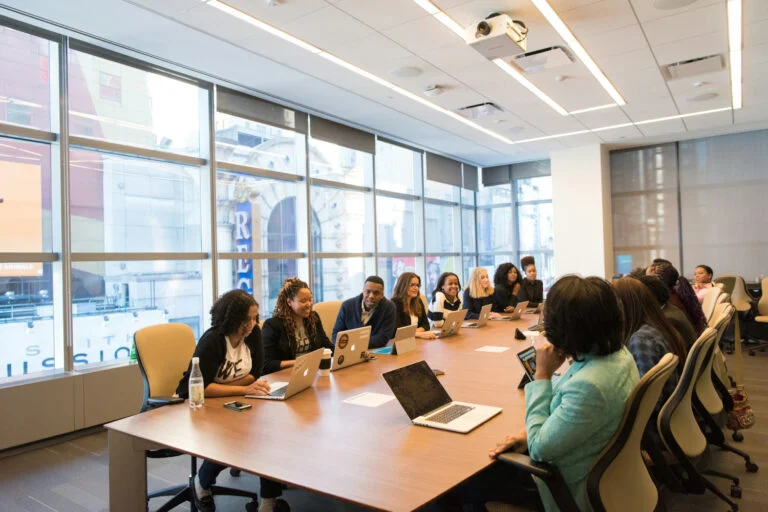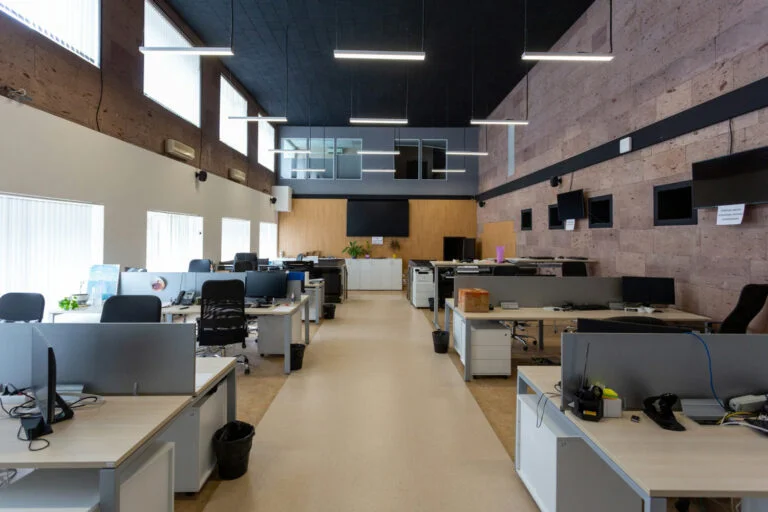It is extremely important to every manager to make sure that the work team is successful and productive. Employee performance depends on several internal and external factors. An individual must receive a certain level of support from company managers to do the job as proficiently as possible. The workplace should be as comfortable as possible, for the employee to work productively, focusing solely on tasks.
The work environment has a direct impact on employee productivity and morale. To make it better, use five office space planning tips.
What is office space planning?
The workstations, the meeting rooms, the access, the reception, and the rest spaces make up the essential spaces when it comes to office space planning. One of the missions of the company is to manage office spaces efficiently, so that workplace well-being is favorable, efficient, sustainable, and safe. To do this, consider that it is key to have a desk reservation system and the mobility of staff in the workplace.
Office space planning — is the engine that ensures a healthy company, the best environment to work in, and it promotes the well-being of your employees.
Why is office space planning important?
The goals to be considered in a workspace must be clear. Every change is an improvement, but it is essential that most of the following factors are met for the project to be a success:
● Improve the productivity of the company as a whole;
● Reduce monthly office costs;
● Encourage interaction between colleagues;
● Promote changes in business philosophy;
● Stimulate creativity;
● Express the brand by creating the identity;
● Reduce the impact on the environment.
All designs should be in tune with and support the corporate culture.
Office space planning tip #1: assess your space
The first step is to make a diagnosis of the current situation. To organize the space more efficiently, you must know how it is occupied today. Knowing how and where people work will help to compose a picture of the situation about the use of space. If many stations are unused or unoccupied for most of the day, it is important to determine where the work is being done and how.
Users themselves can also provide valuable feedback on the efficiency of their workstations to support task performance. For this reason, it will also be necessary to recognize the pre-existing typologies, spatial and labor communication together with the need for integration.
All this data is collected and analyzed to learn not only how the company operates, but also to understand its culture and to determine what goals and activities embody its mission and business vision.
Once the situation status has been defined, the needs program is assembled. The occupancy criteria and typologies are established and the number of workstations, closed offices, common rooms, and support areas that will be necessary is detailed.
Office space planning tip #2: use the right tools
Optimizing spaces for work meetings to organize staff, work time, and workplace management is a pending task for many companies. In this sense, it is a good option to:
● have a flexible room reservation app or a system to reserve meeting rooms. It is a simple alternative, so that two different teams do not coincide in the same space and at the same time. It is about organizing the requests for the reservations of the rooms or spaces.
● use a visitor space management system that can help organize a guest meeting and separate them from the office staff;
● have space planning tools that can give you some new ideas on how to organize the office.
When betting on a productive environment, it is necessary to carry out correct space management of the environment. For common spaces and for there to be prior planning, it is important to reserve meeting rooms, the dining room, or other spaces, this way you will avoid labor conflicts and facilitate the way you work and take breaks.
Office space planning tip #3: engage employees
It is more effective to organize people according to the tasks they perform within the office rather than according to hierarchies. But if it is difficult — just ask the staff — they will certainly say what they need. Communication and work feedback must be effective. The design must support the fluid exchange between all the members of the company. Spaces for collective work (desks, meeting rooms) and meeting and relaxation spaces (breakpoints, service areas, and small cafeterias) are privileged.
Office space planning tip #4: document your space plan
Well-planned work environments, along with the benefits they offer, competitively position the company to attract and retain the best employees. And one more thing you need is to document your space plan.
With the modern resources, you will plan your office, using computerized software. Which allows for making designs that are easy to transfer and modify, making the process of planning the office quick and efficient. In addition, it allows you to focus on certain areas while hiding the other aspects.
Agencies begin their process by understanding employees' concerns, company goals, and available space and budget. Your job is to ensure that all these aspects come together in the workplace and benefit the organization and its members.
Try UnSpot for free
Get a smart solution to manage your hybrid workplace, create work schedules, book desks and meeting rooms, schedule meetings, and get office analytics.
Also, a well-planned office offers the best cost-benefit ratio, considering the intervention budget and its results in the short and medium term.
Office space planning tip #5: monitor and iterate
The sensitivity of data and information, hybrid spaces where security or privacy prevail, or spaces where advanced industrial solutions are implemented are critical spaces that must be studied and designed, so that no detail is left to chance. Based on the business activity and if your company has any of these spaces, you must analyze all the possibilities, and look for a design and a solution, so that the space management is appropriate.
Analyzing and knowing in advance the mistakes help to plan and go on correctly. Some of the aspects to pay special attention to are:
● prevent future extensions and distribution changes;
● calculate the budget in the most efficient way possible;
● look for inspiration and compare different options;
● equip the office progressively.
In short, so that your employees have better physical working conditions, you can put each of the tips into practice and thus optimize the space in the office and gain productivity.
How can UnSpot help with this?
Choosing a good partition wall and equipping it with suitable office furniture is the key to maintaining the comfort and quality of work among staff. Creating a comfortable work environment is crucial as it boosts involvement and motivation.
However, an office has to be properly equipped in order to flexibly address the new demands, be person-oriented and worker-friendly. That is what UnSpot can help you with . Remove some of the tables from the open-space and replace them with couches and bean bag chairs. Equip conference rooms so they provide a welcoming space for project work. An interactive office map, diverse workplace formats (regular desks, standing workstations, bar counters, couches and bean bag chairs). The ability to instantly book conference rooms by any means available from anywhere, including a display at the entrance. All of this is a feature of modern office planning
Start using your office effectively. Leave a request and our managers will contact you to help.









